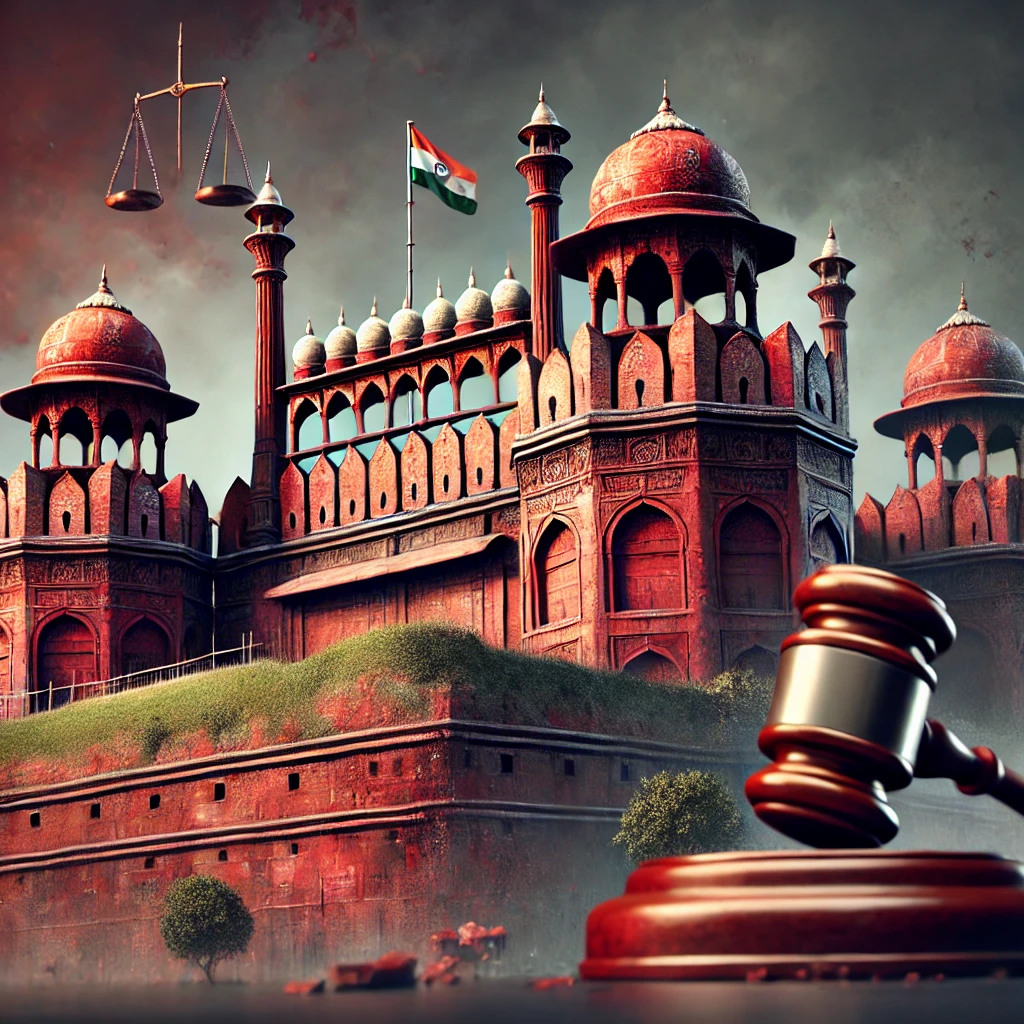In December 2000, a shocking terrorist attack on the Red Fort in Delhi left the nation in turmoil. This incident sparked a comprehensive legal saga involving Mohd. Arif @ Ashfaq, the mastermind behind the attack. The case, titled Mohd. Arif @ Ashfaq v. State (NCT Of Delhi) (2022), traversed a long judicial path from investigations to the final verdicts across various courts, including the Supreme Court.

What Happened During the 2000 Red Fort Attack in Delhi and the Subsequent Investigation and Trial?
Description of the attack and casualties: On 22nd December 2000, the Red Fort witnessed a horrific attack by two terrorists, resulting in the deaths of two Army jawans and a civilian guard. The assailants managed to flee, leaving behind a trail of terror.
Discovery of evidence: In the aftermath, investigators uncovered crucial evidence, including assault rifles, detonators with Urdu markings, and a polythene bag filled with cash, along a slip containing a mobile number, which proved pivotal in the investigation.
Arrests: The noted mobile number led authorities to the arrest of Arif and his accomplice on 26th December 2000. Further investigation linked them to other militants, culminating in encounters in Batla House and Srinagar.
Charge sheet: Delhi Police filed a charge sheet on 20th February 2001 against Arif and 21 others, followed by a supplementary charge sheet, setting the stage for a comprehensive trial.
Trial and sentencing: The trial commenced on 11th September 2001 with 235 witnesses. On 31st October 2005, the court sentenced Arif to death, concluding a significant phase of the legal process.
Legal Proceedings and Appeals in the Red Fort Attack Case
High Court and Supreme Court appeals: Arif’s death sentence was upheld by the Delhi High Court in 2007 and the Supreme Court in 2011, with the latter describing the attack as an “undeclared war” by foreign mercenaries.
Review and curative petitions: Despite the rejection of his review and curative petitions by the Supreme Court in 2012 and 2014, Arif continued his legal battle, emphasizing the gravity of judicial scrutiny in death penalty cases.
Writ petition and Constitution Bench decision: Arif’s argument for a larger bench to hear death penalty cases was agreed upon by a Constitution Bench, highlighting the need for meticulous judicial examination in capital punishment instances.
Final rejection by the Supreme Court: On 3rd November 2022, the Supreme Court’s final dismissal of Arif’s plea underscored the judiciary’s stance on terrorism-related offenses, affirming the death penalty.
Recent Developments in the Arif Case
President’s rejection of the mercy petition: The President, on 27th May 2024, rejected Arif’s mercy petition, a decision that, while significant, is subject to legal challenge on several grounds as per Supreme Court precedents.
Grounds for challenging the President’s decision: The Supreme Court has outlined that the President’s decision can be contested on grounds such as oversight of relevant material or lack of proper consideration, providing a basis for Arif’s potential appeal.
Legal Provisions Related to Mercy Petition in India
Constitutional Provisions: The Indian Constitution empowers the President and Governors to grant clemency in various forms, underscoring the significance of mercy in the penal system.
Code of Criminal Procedure, 1973: The CrPC provisions for sentence suspension, remission, and commutation reflect the legal framework’s flexibility in addressing the nuances of punishment.
Supreme Court Guidelines: The Supreme Court’s guidelines, including the “rarest of rare” doctrine, establish the judicial philosophy towards the death penalty, emphasizing careful consideration and mercy.
262nd Law Commission Report: The recommendation for the abolition of the death penalty, except in terrorism cases, by the 262nd Law Commission marks a pivotal point in the debate over capital punishment in India.
New Mercy Petition Provisions in BNSS
Finality of the President’s decision: The BNSS underscores the finality of the President’s decisions on mercy petitions, limiting judicial review and emphasizing the constitutional prerogative in matters of mercy.
Lack of a mandatory period between rejection and execution: The absence of a prescribed gap between mercy petition rejection and execution in the BNSS contrasts with the Supreme Court’s previous mandates, indicating a shift in policy.
Conclusion
The odyssey of Mohd. Arif’s legal battle in the aftermath of the 2000 Red Fort attack encapsulates the intricate balance between justice for heinous crimes and the humane considerations underpinning mercy petitions. As judicial aspirants, this case offers profound insights into the evolution of legal thought and the judiciary’s role in interpreting and applying laws in matters of life and death. The transition from the Supreme Court’s interventions to the enactment of the BNSS, which positions the President’s decision on mercy petitions as final, marks a significant shift in the legal landscape. It underscores the perpetual tension between the sovereign’s prerogative of mercy and the judiciary’s guardianship of constitutional values and human rights.
For those aspiring to don the robes of justice, this case serves as a compelling study on the complexities of capital punishment, the nuances of mercy petitions, and the broader implications of legal reforms like the BNSS. It challenges future legal luminaries to ponder the delicate balance between retribution and rehabilitation, sovereignty and justice, and ultimately, between life and death. As we reflect on this case, let it ignite within us a deeper commitment to uphold the sanctity of justice, tempered with mercy and humanity, in our pursuit of legal excellence.

